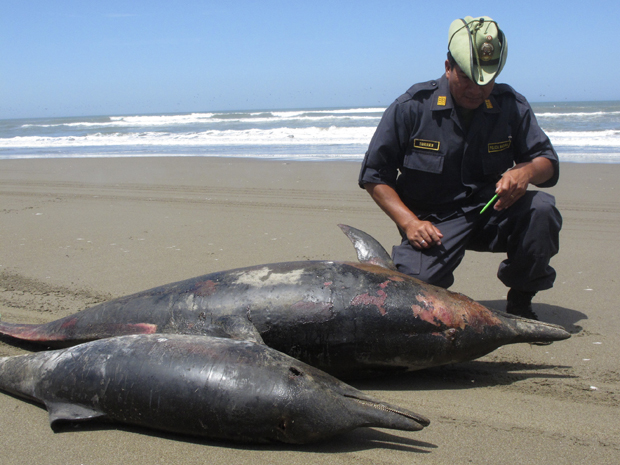Dolphins and pelicans die by the thousands on the coast of Peru
By Jason Marck

Dolphins and pelicans die by the thousands on the coast of Peru
By Jason Marck
This past February, 800 dolphins mysteriously washed up on the shores of northern Peru. In late April, over 4,400 pelicans were found dead on the beaches in the same area.
What’s causing this sudden die-off? And are the two events related?
According to some experts, the surprising answer is: probably not.
The answer may actually lie in a combination of natural and man-made problems. Ken Ramirez, Executive Vice President of Animal Care at Chicago’s Shedd Aquarium, says it’s quite possible the dolphin deaths may be due to a naturally occurring virus. The Morbillivirus has been responsible for the deaths of sea mammals along the costs of South America and in the Gulf of Mexico. While the Morbillivirus is a natural phenomenon, however, Ramirez says that man-made events — namely, dumping of pollution or toxins into the water — may compromise the immune systems of these animals, making it more difficult for them to fight off disease.
As for the pelicans, the answer may also be part-nature part-human in origin. Douglas Stotz, with Chicago’s Field Museum of Natural History, says the ocean is changing from an El Nino to a La Nina situation. That means that waters near the surface of the ocean are getting warmer. The fish that provide the food for the pelicans are either diving deeper or moving away. If the food source is removed, the birds will die of starvation.
Then again, man may have a hand in this process. Stotz says the switch from El Nino to La Nina conditions has been happening faster and more often than at any other time he and other scientists have been studying the ocean temperatures. And this “speeding up” of the planet’s processes may very well be a product of global warming.
